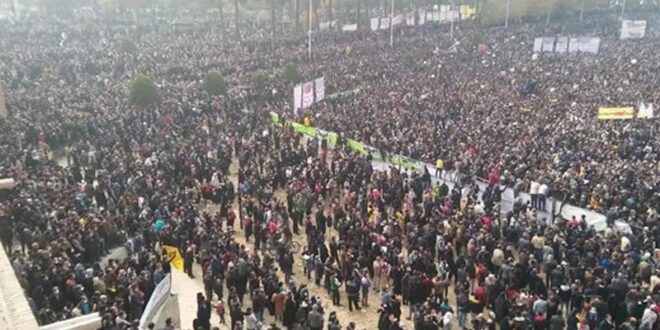When the Iranian people revolted in 1979, many of them thought they would establish a democratic system of governance. The revolution in Iran was never intended to create a theocratic dictatorship ahead of an inclusive and secular government.
The revolution also appeared to be a repudiation of the previous political establishment’s self-serving economic policies and brutal repression of dissent. Most of the factions and oppositional groups actively involved in the revolution, such as the National Council of Resistance of Iran, envisioned a democratic future for the country.
But despite the support of the vast majority of Iranian citizens, they were not ultimately able to prevent Ayatollah Khomeini from co-opting the revolution to establish a system of absolute clerical rule, with himself at its head as the supreme leader. Now, Khomeini’s successor, Ali Khamenei, seems to be overseeing efforts to stave off a renewed push for democratic governance by insisting that opposition to the theocratic dictatorship is tantamount to endorsement of the previous political establishment that was rejected by virtually all Iranians more than four decades ago.
The series of uprisings seen around the country in recent years have revealed the depth of popular support for regime change. For example, at the end of 2017, a protest began in the city of Mashhad over the state of the Iranian economy, before spreading rapidly and also taking on an increasingly political tone. By early January 2018, the movement had encompassed a huge number of cities and towns, with each of them providing an outlet for unusually provocative slogans. The chants included “Death to the dictator,” “Hard-liners, reformers game over,” and “Our enemy is right here.” At the height of that uprising, Khamenei delivered a speech that acknowledged that the NCRI had played a leading role in promoting such slogans and facilitating the protests.
Fear of such organized resistance motivated the regime to meet the next major uprising with repression greater than anything the country had seen since the 1980s, when the system was still struggling to solidify its power structure. With protests erupting spontaneously in nearly 200 localities in November 2019, authorities opened fire on crowds of protesters, killing more than 1,500, before initiating a campaign of systematic torture that was later detailed in an Amnesty International report title “Trampling Humanity.”
Amnesty stated that the Iranian authorities: “Waged a campaign of mass repression that led to the arrest of more than 7,000 men, women and children. Amnesty International has investigated the actions of the Iranian authorities since then and concluded that they have committed further widespread patterns of serious human rights violations. Given the gravity of the violations perpetrated and the systematic impunity prevailing in Iran, Amnesty International is renewing its call on member states of the UN Human Rights Council to mandate a UN-led inquiry into the violations committed with a view to ensuring accountability and guarantees of non-repetition.”
In the period between the two uprisings, Tehran also set its sights directly on the organized resistance. In June 2018, an Iranian diplomat, acting on orders from the regime’s Supreme National Security Council, provided two Iranian-Belgian operatives with a powerful explosive device and directed them to detonate it as near as possible to the Paris stage where Maryam Rajavi, the NCRI’s designated leader of a future transitional government, would be speaking to a gathering of about 100,000 Iranian expatriates.
The 2018 bomb plot was thwarted by European law enforcement, but it went a long way toward revealing the depth of Tehran’s concern about the dissent and organized opposition. In the ensuing four years, however, the regime has sought to downplay that concern in public.
Several uprisings have emerged since the regime’s mass killings of November 2019, one of which began only two months later. Today, with the public reeling from social crises like food price increases, the patterns of public unrest are arguably more unmistakable than ever. The reality is that there is a viable alternative calling for fair elections, secular governance and safeguards for the rights of all citizens. Iran’s solution is looking forward not backward, and Iranians are the first to have recognized this reality.
Tehran would have its adversaries believe that the outcome of regime change would be either a return to the previous political establishment or a descent into factional feuding. But if the international community were to pay attention, it would no doubt recognize that the geographically and demographically diverse participants are all calling for freedom and democracy.
 Eurasia Press & News
Eurasia Press & News



